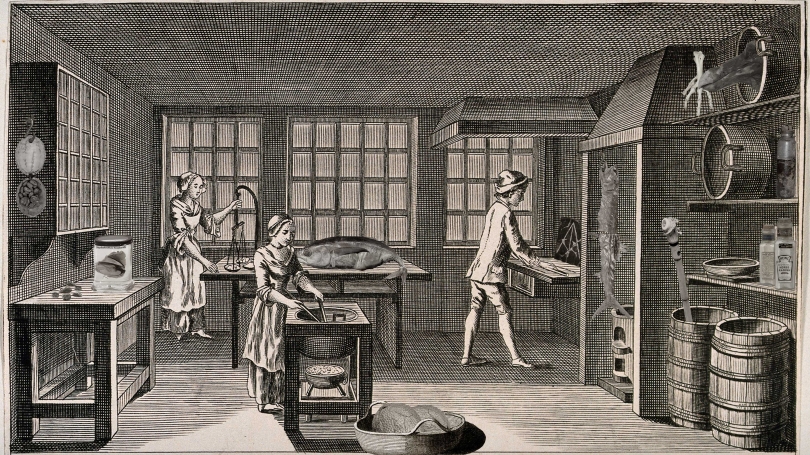
- Undergraduate
- Research
- Foreign Study
- Inclusivity
- News & Events
- People
Back to Top Nav
Back to Top Nav
This fall, Whitney Barlow Robles, a Postdoctoral Fellow in the Department of History and Society of Fellows, launched a digital exhibition titled The Kitchen in the Cabinet: Histories of Food and Science. The exhibition is the product of a collaboration among Robles, Australian graphic designer Katie Dean, and three Dartmouth undergraduate students—Fatema Begum, Lauren Dorsey, and C.C. Lucas.
The Kitchen in the Cabinet investigates the intimate ties among food, natural science, imperialism, and slavery in the early modern period through the stories of centuries-old food artifacts. Despite their perishable nature, these objects survived to the present by being preserved in scientific collections such as natural history museums. During the pandemic, the team set out on armchair expeditions, virtually mining the websites of museums from across the globe and reaching out to curators in pursuit of food artifacts that had survived against the odds. Some of the items they found include a specimen of breadfruit, intended to cheaply provision enslaved individuals in the eighteenth-century Caribbean; a block of dehydrated "portable soup," the likes of which fed sailors and helped stave off scurvy on circumnavigations of the globe; and burnt fragments of persimmon seeds from George Washington's Mount Vernon estate, one of the few foods on the plantation to be eaten by both the enslavers and the enslaved.
The website is best explored from a laptop or desktop computer, which allows users to engage with an interactive homepage designed by Dean and coded by Dorsey. When visitors arrive at the site, they are greeted with a scene based on an etching and engraving from Denis Diderot and Jean-Baptiste le Rond d'Alembert's famed Encyclopédie, a major contribution to Enlightenment print culture that, in the process of striving to catalogue all human knowledge, visualized the worlds of craftspeople. Dean populated the print with the exhibition's featured objects, drawing attention to their latent food and craft nature. By hovering their cursor over individual objects, visitors can read short synopses and click through to each object's full story. The image on each individual artifact's page has a rollover function, likewise activated by one's cursor, that draws attention to the instability of the object's categorization as a scientific specimen rather than a food object.
While the exhibition targets specialists in food studies and the history of science, it also engages a number of contemporary issues, ranging from the continued exploitation and cruel labor conditions in today's food industry—as described, for example, in Begum's feature on Ernest Hemingway's tuna specimen—to the effects of climate change on archives of food, as probed by Dorsey in her feature on a bottle of horseradish preserved by Antarctica's snow and ice.